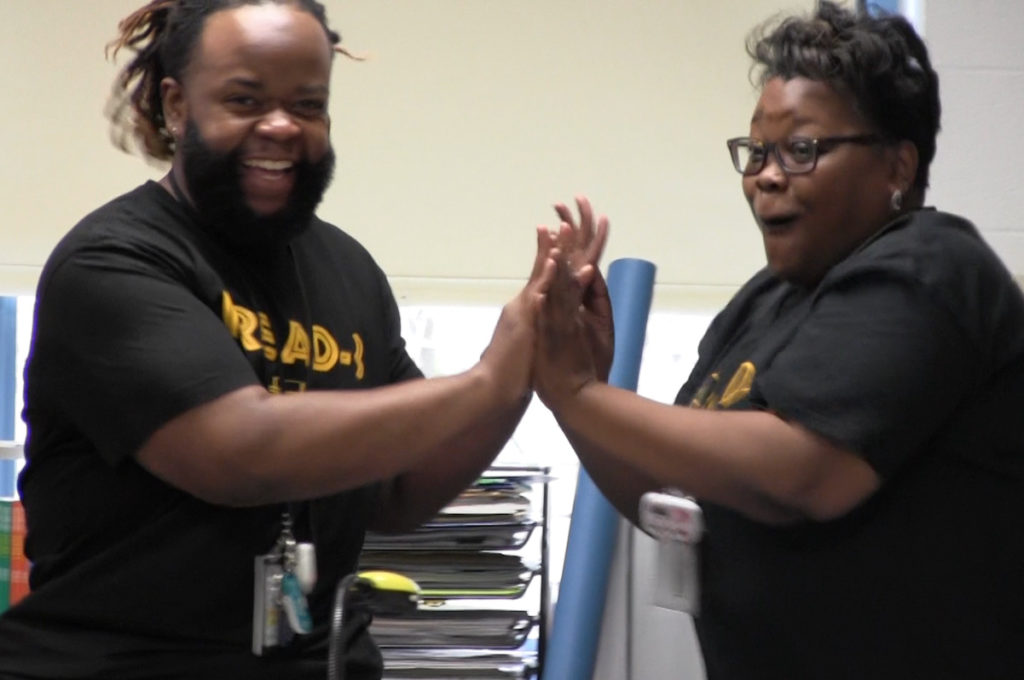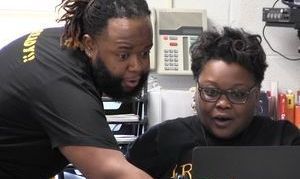By Brandon Warren, September 3, 2019
Teachers, how many times has this happened to you?

The classroom door opens, and in comes the principal, maybe with an assistant principal in tow. Your stomach plunges as you think, “Oh my goodness, they’re here, what are they looking for, what do they like, what don’t they like?” Your purpose in teaching that day flies out of your head, and it’s all downhill from there.
Out of fear—especially in this age of evaluation and accountability—you don’t showcase your best teaching. Even though you and the principal share the same goal—great student progress—you start to crumble. Suddenly, you’re rambling on, nerves on fire, and the principal leaves to inform others that you’re not much of a teacher after all.
But what if you had a buffer—a bridge between you and the principal, someone who advocates for you while helping you improve? You’ll need it the most when your instruction that day was rough, but maybe not quite as far off from your usual teaching as you’d like to believe—I’m there to be honest with you.
I think that’s my role. As a multi-classroom leader, I’m able to get around the fears teachers feel, and support them in their interactions with students and administrators. I’m the bridge that helps both sides truly see the other.
Teachers and principals sometimes fail to see that they want the same things. A principal may say, “This teacher doesn’t want kids to learn, because he’s not doing this, this, and this.” The teacher may say, “This principal doesn’t care about education because she’s not allowing me to do this, this, and this.” But they have the same goal, just different approaches. As the bridge, I can help us all reach the goal.

I like to brag on my teaching team. Telling my administration, “Well, you should have seen the lesson that I saw this teacher do the other day—they have come such a long way from x to z,” helps show everyone that we really are united—no need to be scared.
My choir teacher used to tell me: When you walk on that stage, you need to sparkle and shine for your time there. With my support to improve my team teachers’ planning, instruction, relationship-building, and data analysis, I can help them develop their skills so that “sparkle and shine” come naturally when others walk into their room—and so that the feedback they get feels supportive, not stinging.
My principal, Karen Linn, is an excellent leader—and she respects us as leaders. We MCLs meet weekly to give her a pulse on the building—how teachers feel and options to address concerns and give feedback. Ms. Linn ensures that we share decision-making and a vision—success for every student, and the commitment to love them regardless of anything that happened the day before.
Back to our example of that stomach-crumbling day when the principal visited your classroom: I can both tell Ms. Linn that you were having a bad day and review with you issues that might be happening on more than one bad day. Together, you and I can review her feedback on how you didn’t engage students, and discover that the lesson did, in fact, only showcase you, the lecturing teacher.

Then I can ask you, “The thing is, as a student, I sit there and listen, but does that mean that I’ve retained anything?”
In fact, this is a real-life example—and I guided this teacher to listen to our students, who may know more than we suspect. I remember as a classroom teacher beating my head against the wall over a week of teaching a concept—only to see one student go over to his classmate and say, “Well, you do this and that,” and all of a sudden, his fellow students got it.
When I said, “How did you do that?” the response was, “Well, Mr. Warren, I just explained it how you explained it to me, but I didn’t use your words.”
So I’m the bridge to and from students, teachers, and principals.
How else can we be a bridge?
Videotaping lessons: Reviewing a teacher’s videotaped lesson to provide feedback is a powerful coaching tool. And it allows me to bridge the gap by showing Ms. Linn great examples of our work and getting her input on my team leadership.
Encouraging communication: Sometimes people think the principal doesn’t have time for them. I’m able to say to our principal, “My teacher really wants to talk with you; can you shoot them an email?” The teacher feels great getting that email, and more trust gets built.
And because I work hand-in-hand with teachers, they realize that I’m going to be by their side all of the time. Sometimes, a teacher has to have a not-so-positive conversation with administration. As the bridge, I may attend that meeting for support.
Knowing and advocating for our students: As the bridge between students and administrators, I can share details with the principal. I might say, “Did you know so-and-so didn’t have anything to eat this morning? So that’s why they were acting out.” Then, instead of sending them to in-school suspension, we take them to the cafeteria. My students let me know what’s going on in their lives and ask me to be by their sides. My middle-schoolers especially face a lot of things I never had to endure, like going home to no electricity, or an empty refrigerator, or somebody saying they didn’t want me. That’s when I’m their bridge—and their teacher’s—to school and community resources, and to the principal, to figure out what we can do to help.
We are all on this journey of providing quality instruction and student support, but we can’t do it alone—we must do it together. There are no “big I’s and little you’s.” We have to work as one, and then we see that it’s not just the MCL as a bridge, but that we’re all bridges, because we all have strengths, and together we’re stronger, combining all the qualities that individually we may lack.
Watch a video of Branden Warren here.
Note: Public Impact® and Opportunity Culture® are registered trademarks; Multi-Classroom Leader® and MCL™ are trademarked terms, registration pending.
